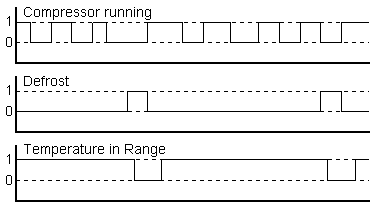On a ship or at a terminal, every refrigerated container slot must have the relevant sockets available to connect the signal cable. These sockets are often integrated directly into the refrigerated container power outlets. The signals from the individual containers are transmitted from there either via a field bus system or via the available power networks to the evaluation computer. The signal cables themselves must also be available.
One of the main disadvantages of four-wire technology is its contact problems. Although signal sockets on the containers and on the ships are equipped with protective flaps, the sockets still regularly suffer from corrosion due to the rough environment. The cables are also prone to damage as they are often subjected to rough treatment when twist locks and lashing rods are dropped. Sometimes the cables are also simply torn off, because no-one removed them before unloading the containers.
Since the signals are transmitted as voltage signals with the statuses 0 V and 24 V, it is impossible to determine whether or not there is a reliable electrical connection. It would have been more advisable to use a procedure for monitoring whether a wire is intact (e.g. 4-20 mA signals). However, this was not agreed when this technology was introduced.
The three signals provided by four-wire technology each have a different meaning. The most important signal is undoubtedly "Temperature in Range". If this is not issued, this triggers an alert. Very simple monitoring systems can therefore only evaluate this signal. "Defrost" and "Compressor running", however, are status signals which are required to provide further information. The "Defrost" signal, for instance, can be used to suppress a temperature alarm (during defrosting, it is to be expected that the temperature will deviate from the nominal value). A cooling compressor which is constantly running (Compressor running) in low-temperature mode can indicate a fault in the container.
 |
| Figure 20: Typical signal behavior of a low-temperature refrigerated container (not to scale) |
Figure 20 shows an example of the signal behavior of a correctly functioning low-temperature refrigerated container: During normal cooling operation, the cooling compressor runs in on/off mode. The compressor is switched off during defrosting and must immediately switch on again after defrosting and remain running for longer than usual, so as to dissipate the defrost heat which has accumulated. The "Temperature in Range" signal will not be issued during defrosting, since the air in the cooling unit is being heated, but must be issued again later.